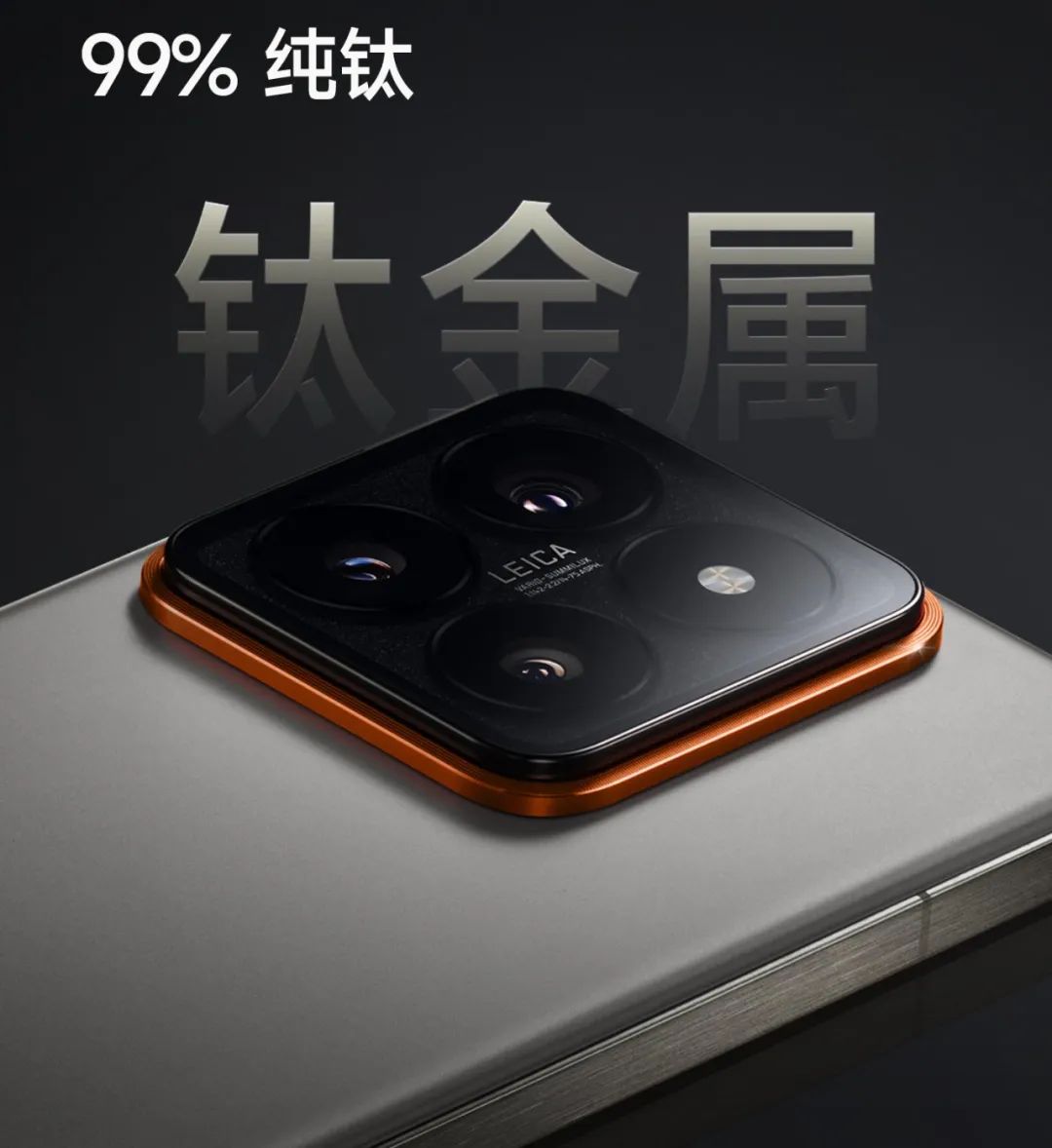
Xiaomi's strategy has been upgraded to "a complete ecosystem for people, cars and homes". ThePaper OS has been officially launched, and there is also a special memory expansion technology
This year’s Android flagship phones arrived earlier than in previous years. Double Eleven has not yet arrived, and Xiaomi Mi 14 series mobile phones were officially released at a press conference on the evening of October 26.

Lei Jun announced Xiaomi Group’s new strategic upgrade plan at the press conference, transforming from the original “mobile phone Xiaomi will build a human-centered intelligent world from personal devices, smart homes to smart travel, and create a "full ecology of people, cars and homes"
At the same time, Xiaomi has released a new generation of operating systems, digital high-end The flagship Xiaomi 14 series, as well as 6 new AIoT products including Xiaomi Watch S3 and Xiaomi TV S Pro 85.
Some major domestic mobile phone manufacturers have recently begun to launch self-developed operating systems. Among them, the "Xiaomi Pascal OS" announced by Xiaomi yesterday has attracted widespread attention

It seems that Xiaomi has long planned to build a unified system: in early 2022, Xiaomi will The software architecture of the four systems of MIUI, Vela, Mina, and car OS has been unified. ThePaper OS has been continuously polished by a R&D team of more than 5,000 people. In the future, it will be able to access more than 200 categories of hardware and connect a total of 820 million devices.
Xiaomi Pengpai OS has five major features in terms of architecture and functionality:
Bottom-level reconstruction: integrating the self-developed Vela system kernel with the deeply modified Linux kernel, To ensure that each device can perform its best performance
ThePaper OS's self-developed cross-terminal interconnection framework HyperConnect enables all devices to communicate in real time through a unified connection protocol
Active intelligence: HyperMind is the thinking center of Xiaomi's entire device. It can comprehensively use the four major sensory capabilities of environment, vision, hearing, and behavior to learn the habits and preferences of different users and proactively execute
Xiaomi is committed to building a full-domain security system, which covers the kernel layer, service framework layer and cross-terminal layer. At the kernel layer, we use an independently developed microkernel security system to fundamentally ensure security.
Open Ecology: Xiaomi’s self-developed IoT embedded software platform Vela system will Fully open source, HyperConnect's capabilities and more than 200 categories of the AIoT platform are also fully open to application developers, helping to create a better integrated software and hardware product experience.
Xiaomi has carried out the largest "underlying reconstruction" in history on The Paper OS to improve hardware scheduling capabilities. On high-computing devices (such as mobile phones), threads can be evaluated dynamically and maintain smooth reloading. On lightweight devices (such as switches and routers), the system will enhance the synergy of multiple computing units to jointly provide a stronger user experience
At the same time, ThePaper OS realizes cross-terminal computing through Xiaomi HyperConnect Zhilian allows devices to be networked dynamically and in real time, presented in a new integrated device center, which is convenient for people to call. It also allows applications to have the ability to call hardware across devices. For example, using devices other than mobile phones, or even the camera of a smart car, in a video call, or letting a WiFi tablet use the phone's 5G network while at work.

After integrating multiple smart devices around you, ThePaper OS will achieve unified thinking, multi-dimensional perception and judgment, and active learning of user habits through the HyperMind all-device thinking center. .
AI large model technology is a key and important component of Xiaomi ThePaper OS. Jin Fan said that AI large model technology has penetrated into every angle of the entire system and allows users to experience it through various end-side applications.
At the press conference, Xiaomi introduced several practical scenarios. When a user orders takeout on a mobile phone, when the takeout is about to arrive at the destination, a notification window will automatically pop up on the device you are using, such as the large screen of a smart TV. The highly connected experience will not be exclusive to Xiaomi products in the future. Xiaomi also expressed that ThePaper OS welcomes more third-party manufacturers to enter the market and jointly build a richer ecosystem

Generate In addition to algorithms, the challenges faced by traditional AI include computing power, and ThePaper OS also has its own optimizations in this regard. In the new system, Xiaoai Assistant’s text generation, AI image expansion and other capabilities are calculated on the mobile phone side without relying on the network and cloud computing

Xiaomi focused on the AI image expansion capability: for a photo, we can use AI calculations to recompose the photo and generate scenery outside the screen.

Recently, it seems that generative artificial intelligence has become the focus of the technology field and has become very popular
According to Lei Jun, Xiaomi’s ThePaper OS lasted 7 years Years of research and development, with more than 5,000 engineers involved, will provide the "public base for the Internet of Everything" for future tens of billions of devices and tens of billions of connections. Perhaps after Hongmeng, we will soon see the rise of another domestic OS.
As for the specific plans for the release of ThePaper OS, the Xiaomi Mi 14 series is the first mobile phone to be equipped with the new system. Since it is a brand new system, Xiaomi said that it will be more cautious in pushing upgrades of existing products:

The first batch of upgraded devices will include several products other than the Xiaomi 14 series, among which Including MIX Fold 3, MIX Fold 2, Mi 13 series, Mi Pad 6 Max 14, Mi Pad 6 Pro, Mi Pad 6 and Redmi K60 series
What will Xiaomi 14 look like with the support of ThePaper OS? Woolen cloth?
Lei Jun said that this generation of flagship mobile phones has achieved a leap-forward upgrade. Its entire series is launching the third-generation Snapdragon 8 mobile platform. The entire series uses Leica Summilux lenses and its own brand image sensors, and is the first in the industry. A large AI client-side model was implemented. Xiaomi 14 Pro also brings stronger dragon crystal glass.
Among them, Xiaomi 14 continues to be positioned as a small-size flagship, and its performance has also been greatly upgraded.
As a small-sized flagship phone that is rare on the market, Xiaomi Mi 14 uses a 6.36-inch screen and a body width of 71.5mm. It is available in four colors: black, white, rock green, and snow mountain pink (plain leather). , the glass version weighs 193g, and the plain leather version weighs 188g.

The screen resolution of Xiaomi Mi 14 has been increased to 1.5K (460ppi). It uses new C8 luminescent material, which has higher luminous efficiency, better viewing angle, Features include lower screen power consumption, peak brightness exceeds 3,000 nits, and power consumption is reduced by more than 17% compared to the previous generation.
The screen size of Xiaomi 14Pro is the mainstream 6.73-inch, four-equilateral slightly curved screen, with 2K resolution and 522PPI. Xiaomi Mi 14Pro also has a titanium special edition on top of the highest configuration.

According to reports, the LTPO OLED screens used by Xiaomi Mi 14 and Xiaomi Mi 14 Pro are exclusively supplied by TCL CSOT. This means that they have excellent eye protection function
In terms of performance, Xiaomi Mi 14 is the world’s premiere third-generation Snapdragon 8 mobile platform. Compared with the previous generation CPU performance, it has improved by 32% and reduced power consumption by 34%. GPU performance is improved by 34% and power consumption is reduced by 38%.
This weekThe just-released Qualcomm Snapdragon 8 Gen 3 processor is stronger than Apple’s new generation processor A17 in terms of CPU multi-core performance and GPU performance, giving Android phones a better hardware capability For the first time in history, it surpassed the iPhone. The 8Gen3 CPU adopts a 1 5 2 architecture, including 1× 3.3GHz Cortex-X4, 3× 3.15GHz Cortex-A720, 2× 2.96GHz Cortex-A720 and 2× 2.27GHz Cortex-A520.
In the "Genshin Impact" test session, Xiaomi Mi 14 was able to achieve an average frame rate of around 60 frames within 30 minutes and the body temperature remained at around 43°C.

Through the ring-shaped cold pump cooling system, the heat dissipation capacity of Xiaomi Mi 14 has been greatly improved. And because of the underlying optimization of Xiaomi's ThePaper OS system, Xiaomi Mi 14 has improved in many indicators such as application installation speed, continuous application startup speed, information flow refresh smoothness, and heat generation in complex scenarios.
Xiaomi Mi 14 is the first in imaging to use the Leica Summilux large aperture high-speed lens, paired with the "Light and Shadow Hunter" 900 image sensor. This increases the light intake of Xiaomi Mi 14 by 180% compared to Xiaomi Mi 13, and is 1.2 times that of iPhone 15 Pro. In special scenes such as low light and large light ratio, the "optical tone" can still be accurately and stably restored

In addition, the Xiaomi Mi 14 series is equipped with the self-developed Pengpai dual-core power system and high-energy-density batteries, bringing the longest battery life in the history of Xiaomi flagships. Both phones have wired charging speeds of 90W/120W, both can perform wireless charging with a power of 50W, and have reached IP68 waterproof and dustproof rating.
On the new generation of flagship phones, Xiaomi Mi 14 has a main camera module that is close to the Pro version. So what are the advantages of Xiaomi Mi 14 Pro besides being larger? Lei Jun said that Xiaomi Mi 14 Pro is the first mobile phone equipped with Xiaomi's self-developed Dragon Crystal glass, which is dozens of times better than ordinary glass in terms of scratch resistance and wear resistance.
Xiaomi 14 Pro introduces stepless variable aperture technology for the first time. Users can freely adjust the aperture size within the range of F/1.42 to F/4.0, automatically adapting to light like pupils. Especially when shooting videos, the ultra-high exposure flexibility of the variable aperture can automatically adapt to changes in light, bringing users a more stable picture performance

That’s it. , all seemed to be expected upgrades, and then Xiaomi announced a unique technology. Lei Jun said that the Xiaomi team discovered that each solid-state memory chip has extra space reserved. After the team performed "magic modifications" on the memory chips, it was found that the 256GB chip could "recover" 8GB. And the 512GB gets you back 16GB.
Therefore, on the 256GB version of the new mobile phone Xiaomi 14 Pro, the capacity has been "expanded" to 264GB (256GB 8GB). Similarly, on the 512GB version of Xiaomi 14/Pro, the capacity is 528GB (512GB 16GB) .

Lei Jun said that this discovery is of great significance. Xiaomi already has relevant patents. At the same time, not only mobile phones, but in the future, everyone’s computers, tablets, and solid-state drives will be able to renovate them from scratch. benefit from technology.
Finally, there is the price issue. The price of this year’s new generation products has dropped compared to last year:

Lei Jun recommends that everyone directly buy Xiaomi’s titanium metal special version of mobile phone. Xiaomi has made adjustments to this. It seems that this generation of flagship mobile phones will face more fierce competition.
The products released yesterday cover various products such as watches, blood pressure monitors, refrigerators, and air conditioners, and are now online and offline sales started. Xiaomi 14 series mobile phones have begun pre-sale and will be officially launched at 8 pm on October 31
The above is the detailed content of Xiaomi Mi 14 released: new Thermal OS unveiled, Pro version made of titanium. For more information, please follow other related articles on the PHP Chinese website!




